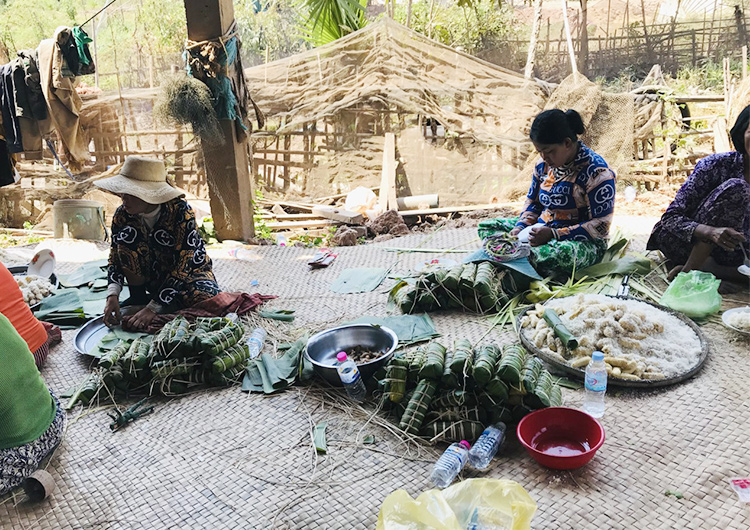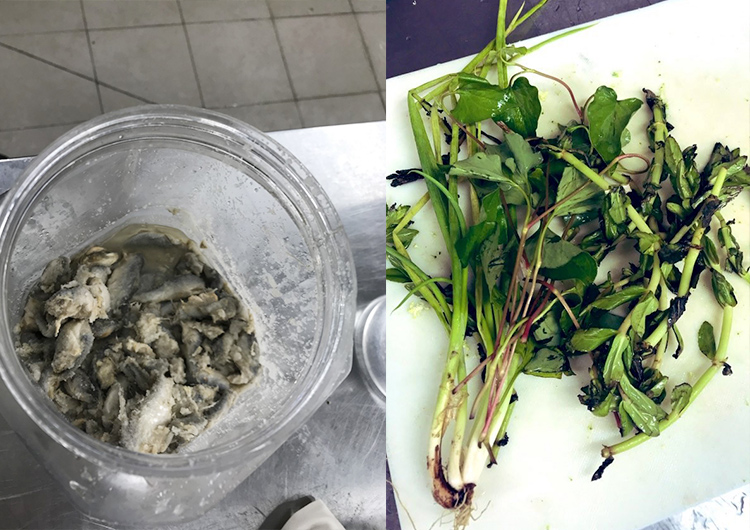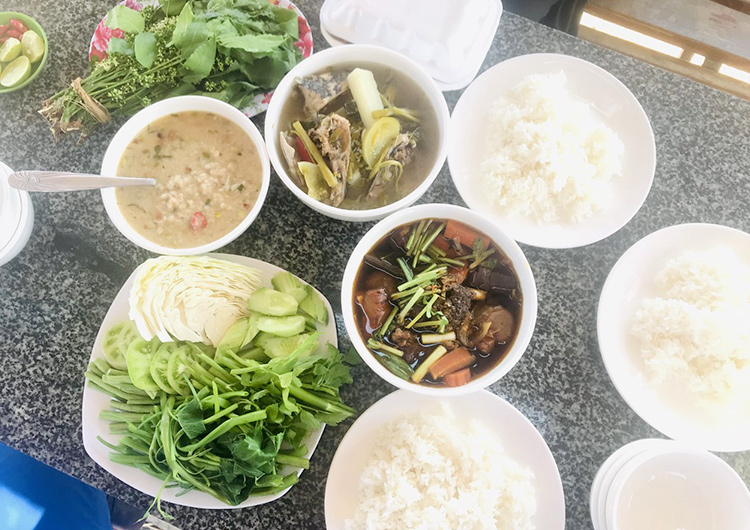
What do you imagine when you think of “Cambodian Food”? You might envision delicious exotic fruit and lovely rice dishes because it is a tropical Southeast Asian nation.
I remember when I first came to Cambodia, I couldn’t find much information about Cambodian food on the internet and which made me think that it’s hard to grasp the characteristics of their food culture.
It has now been three months since I was assigned to the Department of Nutrition at Japan Heart Children’s Medical Center, and by watching the Khmer staff cooking food every day, I am fascinated by the rich and unique Cambodian culinary culture.
Like Japan, Cambodia’s staple food is that wonderful little grain we call rice. Did you know that Cambodian rice is recognised internationally? In fact, it took the top prize at the World Rice Conference from 2012 to 2014 and again in 2018.
In this country, with such a strong and proud rice culture, large amounts of white rice with a few side dishes are standard for daily meals.
Even if you say “side dish” there often isn’t a main dish like in Japan where there would be a main dish with rice, a side dish and soup. However there is often a combination of salty fish and rice.
Since the whole country surrounds the Tonle Sap Lake, the main source of protein is freshwater fish, which isn’t so common in Japan. One of the most common types is catfish, but I also find mackerel and horse mackerel sometimes. They are probably delivered from the coast which is quite far from our region.
Additionally, food is often processed for preservation or protected with seasonings from the hot and humid environment. In Japan we have miso made from fermented soybeans, but Cambodia has prahok made from fermented fish. You can use it to add flavour to soup or apply it directly to the dish.

In Khmer Cuisine there are a lot of herbs used to eliminate the unique odours of freshwater fish and I find it interesting to see a wide variety of herbs lining up in the kitchen every day. They have a unique bitterness and aroma, that while strange at first, becomes calming. Just as Japanese are calmed by drinking miso soup, Khmer people may feel the same way with the taste of prahok, Khmer herbs and tamarind.

Cambodia’s cuisine as an extension of its unique geographical background, culture and history is beautiful and fascinating, but there are elements that contribute to the widening gap with developing nations in terms of nutritional status.
In a country such as Cambodia where there is a strong awareness that “meals are needed mainly just to satisfy the stomach”, it is still reported that there are nutritional deficiencies in pregnant woman and children, influenced by the fact that they often eat as described as above. The government is working on strengthening subsidies for iodine, vitamin A and iron, but these measure have not yet been reflected in health outcomes.
On the other hand, as in other countries, the number of non-communicable diseases are increasing, and while there are many malnutrition-related disorders in rural areas, there are problems related to over-nutrition in urban areas. Double or even triple the burden of malnutrition exists here and creates further problems. In the area where our hospital is, there are relatively few undernourished children as it is only one hour away from the urban centre, Phnom Penh, but the proportion is significantly higher in rural areas such as the Thai-Lao border.
One of the small steps that we can start from here is to increase food diversity in our daily lives.
“Let’s increase the opportunities to come into contact with different foods”
In our food centre, we prepare a menu every week together with Khmer staff so that we can enjoy diverse meals every day. The menu is translated into Japanese and Khmer and posted up, offering “nostalgic tastes and new discoveries” with seasonal desserts.
Cambodia does not have a nutritionist training institution and there are only few hospitals with a nutrition management department. Looking at this situation, it is hard to say that nutritional interventions are widespread.
Although Cambodia has an agricultural industry, it depends on neighbouring countries such as Vietnam and Thailand for many vegetables and protein sources. As a result, many households regard meat and vegetables as a luxury, and due to the coronavirus the price of these goods has only risen further to the point where it is difficult to provide them as a staple at the food centre. You can imagine that this situation is the same in many households.
Although we have not reached the stage where we are approaching nutrition issues from a wide range of directions, such as agriculture and transportation (for accessibility), children at our hospital, their families and Cambodian medical staff come into contact with a diverse diet through three meals a day and take that knowledge home. I hope that by spreading nutritional knowledge to their families and communities, they can create the opportunity to have a diverse and well-balanced diet.
Ms. Kawai, Nutrition Management Department

